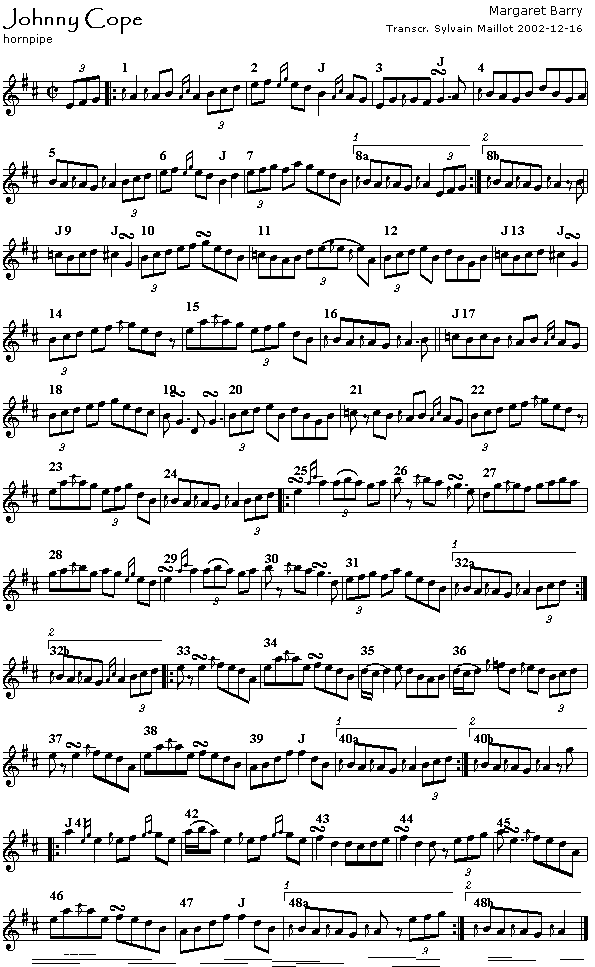Transcribed by Sylvain Maillot with comments by Steve Jones, 30 December 2002

Once again, this is a clip supplied by Peter Laban. All he can tell us about the player, Margaret Barry (apart from the fact that she is not the famous banjo-playing ballad belter of the same name), is that she played recitals in Dublin in the 1980s with Michel Bonamy and Eugene Lambe. If anyone has more information, we would be grateful for it.
Johnny Cope is a six-part hornpipe of Scottish origin. It is apparently something of a show piece for highland pipers, and this setting serves a similar purpose for Irish musicians. Sir John Cope was an English general defeated by Bonnie Prince Charlie's forces at the battle of Prestonpans, an event celebrated in the Jacobite song of the same name. The air to that song must have served as the basis for this set of variations. Incidentally, Teri Kessler informs me that the tune is still played by some Scottish regiments as their reveille!
Peter Laban adds that the spread of the tune among Irish musicians began when Padraig O'Keeffe gave his version to Sťamus Ennis while Ennis was collecting for the BBC. Ennis took up the tune and passed it on to the rest of us (mainly via Liam O'Flynn and Planxty).
This is a fine, confident performance that speaks for itself. Margaret Barry makes plentiful use of slides (indicated here by the "J" letters above the staff), and staccato tongued triplets - especially in the Bcd run that recurs throughout the tune.
As with all the pieces on these pages, the notes are only shown to help you listen, and no claims are made that transcriptions are totally accurate. Nor have we made much effort to ensure that the various transcribers use the same conventions.
In this regard Sylvain Maillot, who has done a grand job with this transcription, wondered whether there might be more conventional ways of representing some of the ornaments. I think there might: for example, the "rising roll" figure on the note of e in bar 11 might have been represented (in ABC format) as "d ~e3 A", but Sylvain's rendition is probably more accurate, rhythmically.
In bars 9 and 13, Sylvain has also indicated c# where conventionally we would expect a c-natural (assuming that the player is in fact intending to play a c-natural). But, taken with the slide indication, the c# is in fact a more accurate representation of the note sounded. (Unfortunately, the ABC2Win software used to generate the music image is unable to show slides. So I have taken the liberty of converting Sylvain's "J" slide indications into above-staff comments.)
It might also have been more conventional to give a key signature of one sharp (A dorian) rather than two (A mixolydian), but Sylvain's choice makes for fewer accidentals, given the frequency of the Bc#d triplet run.
Steve Jones, 30 December 2002